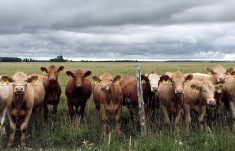Much has been made of the agriculture labour shortage throughout the country.
Committees have been struck, task forces created, reports authored and strategies presented.
But it has been to no avail. The gap between open jobs and available workers just keeps growing.
Lately, amidst the so-called ‘Great Resignation,’ this trend has appeared widely throughout the broader economy.
It’s a familiar storyline for anyone who’s been following this trend in agriculture for the past couple of decades.
Read Also

Calling all Co-operator readers
Hey farmers, we want to hear your Manitoba Co-operator stories: the articles that stuck out, the farm history you watched on our pages.
“They think they’re too good for these jobs.”
“Canadians won’t work doing (fill in the blank) these days.”
“Nobody wants to work anymore.”
That might be a satisfying refrain for employers. But it’s also a reflection of their refusal to look in the mirror for a reason why people don’t want to work for their businesses anymore.
Take this recent help-wanted advertisement for hog barns in rural Manitoba. These barns are owned by a large vertically integrated multinational food company.
They are looking to hire pork production and animal-care technicians to directly tend the animals.
That can be unpleasant work at times, even though they are necessary functions and a honourable way to pay the bills. It will certainly involve shift work, and at times, long hours.
One might think that to attract candidates they’d be offering a decent wage. But instead they were offering what amounts to just-above-poverty wages.
The starting wage was between $14.60 and $16 an hour, or calculated on a 2,000-hour work year, $29,200 to $32,000 a year. At the higher rate, that’s just over $2,600 in gross income per month.
According to a handy online calculator, in Manitoba you can knock off $6,451 in federal and provincial taxes and mandated deductions like EI and CPP.
That leaves net pay of $25,549, or monthly take-home pay of $2,129.
For perspective, someone working for minimum wage at a dollar store would earn $11.95 an hour, or $23,900 a year gross, $19,961 a year net, and a monthly take-home of $1,600.
So the barn worker is about $500 a month better off than the minimum wage earner.
But with the average rent in Manitoba for a one-bedroom apartment nearing $1,000 a month, and a vehicle almost certainly being a necessity for anyone working in rural Manitoba, you can see there’s not going to be a lot of fat left in either personal budget.
The company that’s paying these workers that wage in rural Manitoba enjoyed 2020 sales of over $4.3 billion. At the end of the 2020 fiscal year, it was sitting on $100 million in cash. And it paid its CEO $6.8 million that year.
Sure, someone with the skills to run a big company should be compensated. Otherwise they’ll just take their services elsewhere, and you’d have to pay the next guy or gal as much or more.
However, if that’s your world view, you have to be OK with it when the folks at the other end of the pay scale make exactly the same kind of rational decision — one that serves their own best interests.
In the case of the job listing I reviewed — and I’ll note that it remains in place now, weeks later — it appears that’s exactly what happened.
People are prepared to take on unpleasant jobs if the wages are high enough. The fact plumbers and police officers exist should be evidence enough.
But if you combine an unpleasant job with low, and easily replaceable wages, you shouldn’t be shocked that you’re not exactly getting a lineup at the barn door.
But rather than face this hard truth, the pork sector — in step with much of the rest of the agriculture sector — now seems to want to bring in temporary foreign workers to address this labour shortfall.
But again, this fails to address the root cause of the sector’s issues, and instead simply slaps a band-aid over the problem, while simultaneously creating new problems.
Recently the Mexican government announced it was revisiting its agriculture labour exchange program with Canada, concerned about worker treatment.
At the same time, resistance does seem to be growing here at home over the continual expansion of the program and what many see as employers who are cynically exploiting it.
Some don’t like the way it allows unscrupulous employers to exploit workers, others claim it suppresses domestic wage growth.
This should all underscore the reality of the fundamentally political nature of these programs. They could simply disappear if enough bad press starts to stack up.
And then there’s also the uncomfortable reality that it’s tough for a sector like agriculture to insist that the only way it can survive and compete is to import global inequality.
If agriculture wants to be one of the economic drivers of the country, it had better be prepared to prove that it won’t be driving the country’s workers into the ditch.
















